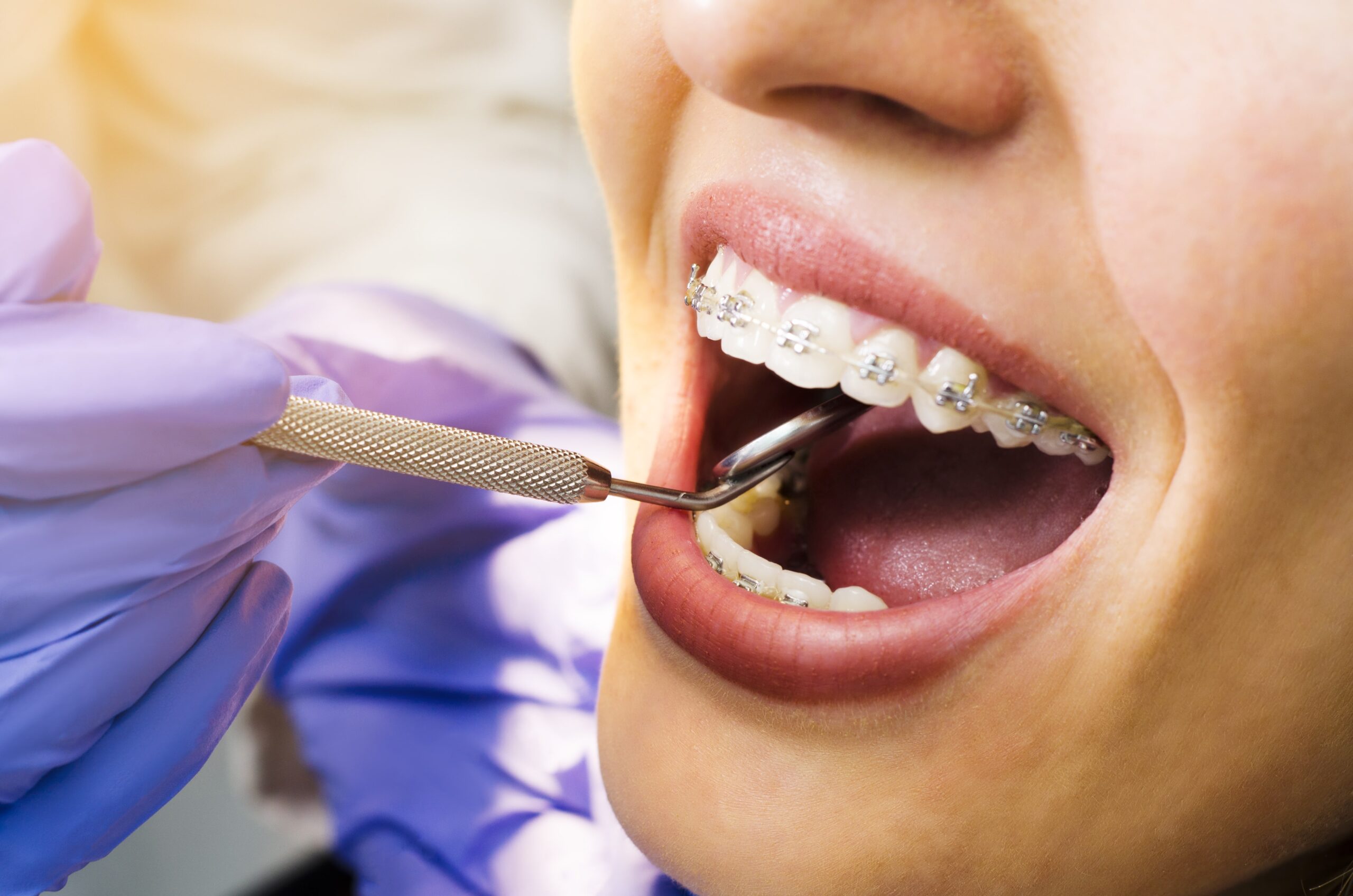
Braces are a common orthodontic treatment used to correct misaligned teeth, bite issues, and jaw problems. They consist of brackets and wires that gradually shift teeth into their desired positions. Suitable for both children and adults, braces are highly effective for a wide range of orthodontic issues. Here’s an overview of braces treatment and what to expect.
How Braces Work
- Brackets and Wires : Braces consist of metal or ceramic brackets that are attached to each tooth and connected by a wire. The wire is adjusted periodically to apply gentle pressure, moving the teeth into alignment over time.
- Adjustments : Regular orthodontic appointments are necessary to tighten the wire, which helps continue the process of shifting teeth.
- Treatment Duration : Braces treatment typically lasts between 18 months and 3 years, depending on the complexity of the case.
Types of Braces
- Metal Braces
- Traditional metal braces are the most common type, using high-grade stainless steel brackets and wires.
- They are more affordable compared to other options but may be more noticeable.
- Ceramic Braces
- Ceramic braces are similar to metal braces but use tooth-colored or clear brackets, making them less noticeable.
- They are a good choice for those who want a more discreet treatment but may require more care to avoid staining.
- Lingual Braces
- These braces are placed on the back (lingual side) of the teeth, making them invisible from the front.
- They are customized for each patient but can be more challenging to clean and may cause slight discomfort initially.
- Self-Ligating Braces
- Self-ligating braces use a special clip instead of elastic bands to hold the wire in place, which can reduce friction and make adjustments more comfortable.
- They are available in both metal and ceramic versions.
Benefits of Braces
Effective for Severe Orthodontic Issues
- Braces are highly effective for treating severe misalignments, including crowded teeth, large gaps, overbites, underbites, and crossbites.
Improved Oral Health
- Straightening teeth with braces can make it easier to clean them, reducing the risk of cavities, gum disease, and other oral health issues.
Long-Lasting Results
- With proper care and use of a retainer after treatment, the results of braces can last a lifetime.
Customizable Options
- Patients can personalize their braces with different colored bands, making the treatment more fun for younger patients.
What to Expect During Braces Treatment
Initial Consultation
- The orthodontist will assess your dental condition, take X-rays, and create a treatment plan. If necessary, spacers may be used before the braces are applied to create space between the teeth.
Fitting the Braces
- The braces will be attached to your teeth using a special adhesive, and a wire will be threaded through the brackets. This procedure typically takes about 1-2 hours.
Adjustments and Tightening
- Every 4-6 weeks, you’ll need to visit the orthodontist for adjustments. The wire will be tightened or changed to continue the movement of your teeth.
Wearing Retainers Post-Treatment
- After the braces are removed, you’ll need to wear a retainer to maintain the new position of your teeth and prevent them from shifting back.
Care and Maintenance Tips
Practice Good Oral Hygiene
- Brush and floss carefully around the brackets and wires to avoid plaque buildup and tooth decay.
Avoid Certain Foods
- Hard, sticky, and chewy foods can damage the braces or cause discomfort. Avoid items like popcorn, chewing gum, and hard candy.
Use Orthodontic Wax for Discomfort
- If the braces cause irritation to the cheeks or lips, orthodontic wax can be applied to the brackets for relief.
Attend Regular Appointments
- Make sure to keep up with scheduled adjustments to ensure the treatment progresses smoothly.
Braces treatment F&Q
Braces are orthodontic devices used to straighten teeth and correct bite issues. They consist of brackets attached to the teeth and wires that connect them. The wires apply gentle pressure to gradually shift the teeth into proper alignment over time.
The duration of braces treatment typically ranges from 18 months to 3 years, depending on the complexity of the dental issues being addressed. The orthodontist will provide a more accurate estimate during the initial consultation.
Yes, there are several types of braces, including:
- Metal braces (traditional stainless steel)
- Ceramic braces (tooth-colored for a more discreet look)
- Lingual braces (attached to the back of the teeth)
- Self-ligating braces (use a clip instead of elastic bands)
While the process of getting braces is not painful, some discomfort or pressure may occur after adjustments, especially when switching to a new wire. This discomfort usually subsides within a few days.
Patients typically need to visit the orthodontist every 4-6 weeks for adjustments. During these visits, the orthodontist will tighten the wires and monitor the progress of the treatment.
Yes, you can eat with braces, but you should avoid hard, sticky, or chewy foods that could damage the braces. It’s also essential to cut food into smaller pieces to make chewing easier.












